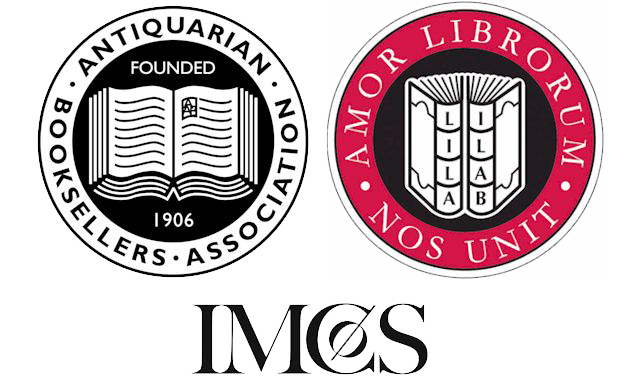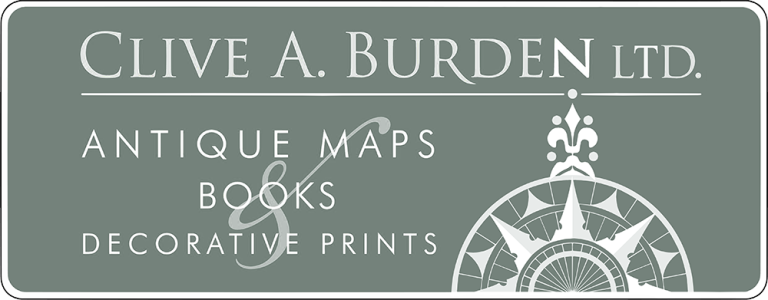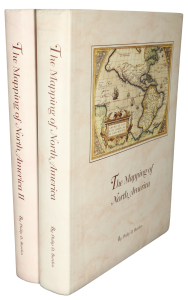Rare Maps and Prints
- World & Celestial
- North America
- West Indies, South & Central America
- British Isles
- British Isles
- English counties
- Large-scale
- Bedfordshire
- Berkshire
- Buckinghamshire
- Cambridgeshire
- Cheshire
- Cornwall
- Cumberland
- Derbyshire
- Devon
- Dorset
- Durham
- Essex
- Gloucestershire
- Hampshire
- Herefordshire
- Hertfordshire
- Huntingdonshire
- Islands
- Kent
- Lancashire
- Leicestershire
- Lincolnshire
- Middlesex
- Norfolk
- Northamptonshire
- Northumberland
- Nottinghamshire
- Oxfordshire
- Rutland
- Shropshire
- Somerset
- Staffordshire
- Suffolk
- Surrey
- Sussex
- Warwickshire
- Westmoreland
- Wiltshire
- Worcestershire
- Yorkshire
- Wales
- Scotland
- Ireland
- Western Europe
- Eastern Europe
- Middle East
- Africa
- Asia
- Australasia & Pacific
- Decorative Prints
- Title Pages
Mr. Philip D. Burden
P.O. Box 863,
Chalfont St. Giles, Bucks HP6 9HD,
UNITED KINGDOM
Tel: +44 (0) 1494 76 33 13
Email: enquiries@caburden.com
THE MAP
The general map of Virginia found in this example is in a previously unrecorded first state. For a work which has been extensively studied by the likes of Henry Stevens in the mid-nineteenth century, the Earl of Crawford’s comprehensive ‘Bibliotheca Lindesiana’ in 1884, and the Church Catalogue of 1907, it is remarkable that this newly discovered state of the map has not been identified before. The map is derived from the two surviving John White manuscript maps now found in the British Library. It is considered possible that other lost material might have been utilised as the engraved map extends further westward. There are other nomenclature differences also with the manuscripts: ‘Trinety harbor’ is not found on either manuscript map. Indeed, Cumming noted in his work on the mapping of the Southeast that “the addition of some names and an improvement in coastal delineation may show increased knowledge gained in 1587-88, after the manuscript map was made” (Cumming no. 12).
There are three noted differences between this example and the previously thought of first state. The first is the lack of ‘. 25’ following ‘Scala leucarum’ in the text above the scale of miles. Secondly the lake above ‘Croatoan’ is here named Paguuij’ and omits the ‘p’ on the end. The origins of this might originate in the different spellings found on the two surviving manuscript maps. The more general map uses ‘Paquipi’ whereas the larger scaled map places ‘Paquippe’ here. On this new state the lack of a ‘p’ on the end clearly reflected an error which was corrected.
Finally, this map is best known in its three previous states by the spelling ‘Ehesepiooc’ assigned to Indian village on a river near the mouth of Chesapeake Bay. The version offered here clearly displays a poorly engraved version, the top of the ‘i’ in particular. This portion of the engraving was redone, more legibly for the next state. A close comparison of states clearly shows that this state pre-dates the previously known first state. The new list of states can now be shown as follows:
State 1 With ‘Scala leucarum’ lacking ’25’ above the scale of miles. The lake above ‘Croatoan’ is here named ‘Paguuij’, and the Indian village on a river near the mouth of Chesapeake Bay has the ‘pi’ of ‘Ehesepiooc’ crudely engraved.
State 2 ’25’ added above the scale of miles, the lake now has a ‘p’ added and now reads ‘Paguuijp’, and the village name is now engraved more legibly.
State 3 The first letter of the Indian village has had a ‘C’ superimposed upon the first letter.
State 4 The first character of the Indian village is erased and a C engraved, ‘Chesepiooc’, remnants remain.
The map illustrates the region from present day Chesapeake Bay on the right, south to Cape Lookout. ‘Theodore de Bry’s map of Virginia, after John White, is one of the most significant cartographical milestones in colonial North American history. It was the most accurate map drawn in the sixteenth century of any part of that continent. It became the prototype of the area until long after James Moxon’s map in 1671 … This is the first map to focus on Virginia (now largely North Carolina)’ (Burden).
‘It exhibits greater knowledge than on any of the surviving manuscripts. Possibly this is from knowledge gained during White’s brief visit in 1587 and signifies some lost manuscript. Here we find the first printed use of the name Chesapeake, ‘Chesepiooc Sinus’, and the second of Roanoke (the first being Mazza, c.1589). It depicts the positions of the Indian villages in the area and is adorned with the Royal Arms of England. The latter’s ships are shown at sea with Indian canoes traversing the inland waters. The two native scenes shown are taken from illustrations in the book’ (Burden).
COLONIZATION ATTEMPT
Whilst the English had a presence in North America in the rich fishing waters off Newfoundland from a very early date, they were slow to develop any physical claims on the mainland. The Spanish, Portuguese, and French were leading the way. Two individuals in particular who sought to redress the balance were Michael Lok (c.1532-1620-22) and Richard Hakluyt (1553-1616). Lok was effectively bankrupted after backing Martin Frobisher’s attempts at a north-west passage route to Asia. Hakluyt was a tireless promoter of colonising the New World and his several publications garnered much attention. Whilst at Christ Church, Oxford, he made the acquaintance of several similar minded promoters like Sir Francis Drake (1540-96), Sir Humphrey Gilbert (1537-83), and Walter Raleigh (1554-1618). Raleigh had encouraged Hakluyt to write the ‘Discourse of western planting’ in 1584. It was also through Hakluyt that Theodore de Bry would publish Thomas Harriot’s ‘Briefe and True Report of the New Found Land of Virginia’ issued in 1588, illustrated with the drawings of John White here as this work.
‘The publication of Michael Lok’s map in 1582 had tantalisingly depicted at the rough latitude of [present-day] Carolina a large inland sea that connected with the Pacific Ocean. This was derived from Giovanni di Verrazzano’s mistaken understanding of the Carolina Sounds when he passed by the Outer Banks in 1524. It was also positioned conveniently between the French centred on the Gulf of St. Lawrence and the Spanish in Florida.
A reconnoitre was sent out by Walter Raleigh in 1584 under the command of Captains Philip Amadas and Arthur Barlow to select a suitable landing site. They chose Roanoke Island and after six weeks returned to England. Immediately Raleigh started preparations for a permanent settlement, and in January 1585 he was knighted by Queen Elizabeth I. The new colony was to be named in her honour Virginia. In April Sir Richard Grenville left Plymouth and in late June started some initial explorations of the Carolina Sounds. Landing at Roanoke they built a fort and prepared for the winter; Grenville returned home leaving several men behind. Small parties were sent out which included the scientist and surveyor Thomas Harriot and the artist John White. Between them they recorded and mapped the areas they visited. White sketched some beautifully finished drawings, several of which reside today at the British Library. In the meantime, the colony suffered from bad provisions and poor relations, both with the Indians and between themselves. When Sir Francis Drake passed by in June 1586 at the end of his West Indian voyage, and saw the state they were in, he carried all the survivors with him back to England. For a brief period, the colony was abandoned. Later in the summer Grenville arrived and finding nobody there promptly left only fifteen men and returned. These men disappeared, probably lost to Indian attacks.
The fourth voyage to the area arrived in July 1587 and White, who was now Governor, set about restoring the remains of the settlement. He was, however, persuaded to sail back for England to obtain more supplies. He was never to see his daughter again, or his grand-daughter Virginia Dare who was the first English person born in America. By the time he arrived back in England, it was under serious threat of attack from the Spanish Armada, so no ships could be spared. On his eventual return to the area during the summer of 1590 he found no survivors. To this day nobody knows the fate of the colonists.’ (Burden). Recent archaeological finds are producing some evidence of their fate, indeed one of the clues was left in one of the watercolour maps of John White himself.
PUBLICATION
Distracted by the threat of the Spanish Armada, interest in the Roanoke colony faded. To maintain it Thomas Harriot published his unillustrated ‘A briefe and true report of the new found land of Virginia’ in 1588. It so happened that ‘at this time Theodore de Bry was in London trying to acquire Jacques le Moyne’s original drawings of the French colonial attempt in Florida during the 1560s. He had in mind to publish an illustrated account of the venture. However, Raleigh and others persuaded him to publish Harriot’s account and illustrate it with White’s drawings. It was published in Frankfurt, 1590, in four languages: Latin, German, French and English. They were published, we are told by Cumming, within ten days of each other’ (Burden).
THE IMAGES
The first plate is not listed in the register of illustrations depicts the allegorical scene of Adam and Eve beneath an apple tree. It is here in the first state. It is engraved by Theodore de Bry after T. de Winghe. Its presence is suggested to relay the fact that this ‘New World’ is a further opportunity for mankind to embrace a new Garden of Eden and not to ruin it.
Following the map are the 22 plates Gijsbert van Veen (c.1562-1628) or Theodore de Bry (1528-98) after John White. The first of these is a birds-eye view of the area around Roanoke and the arrival of the English in Virginia. A smaller vessel is shown traversing the waters of the Outer Banks towards the island where they would set up their colony. The remainder are iconic images of Algonquin life. Nine plates illustrate figures and 7 record various activities including the making of boats, fishing, cooking, praying, and dancing. The native villages of Pomeiock near present-day Gibbs Creek and Secota on the present-day Pamlico River, both are full page images. The plates illustrate native buildings and a final one their weapons. The final five plates of the book illustrate Picts, or ancient inhabitants of Britain. They are meant to portray the similarity between the people of Britain and the natives in America. This work and the comparisons it highlights, can be foreseen as an early form of anthropology.
Church details early alterations to the first issue and most examples bear mixed states of the plates. The title page here is first issue, with the printed overslip privilege statement, as is the other text and most of the engravings. Plates 3, 5, 6, 8, and 15 are in Church’s second state. This example also lacks the blank leaf paginated D6 often omitted. Provenance: with bookplate inside front cover of ‘Livraria Academica’, bookseller founded by Joaquim Guedes da Silva in Porto, Portugal, in 1912; private German collection. Alden and Landis 590⁄31; Alexander (1976); Blythe (2012) ‘Does a John White map offer clues to the fate of the Lost Colony?’; Burden (1996) 76 & 77; Church (1907) 140; Crawford (1884) pp. 105-109; Cumming (1962) no. 12 and pp. 13-17 (see nos. 6-8 for White’s manuscript maps); Cumming, Skelton & Quinn (1972) pp. 178-80 & 193-205; Durant (1981); Faupel (1989) pp. 22 etc.; Fite and Freeman (1926) pp. 92-5; Garratt (1979) p. 4 G1; Lorent (1946) pp. 121-277; Miles & Reese (2002) p. 30; Morrison (1983) no. 3; ODNB; Quinn (1955); Sabin (1868) no. 8784; Schwartz and Ehrenberg (1980) pp. 76-81.
Admiranda narratio fida tamen, de commodis et incolarum ritibus Virginiae
SOLD








